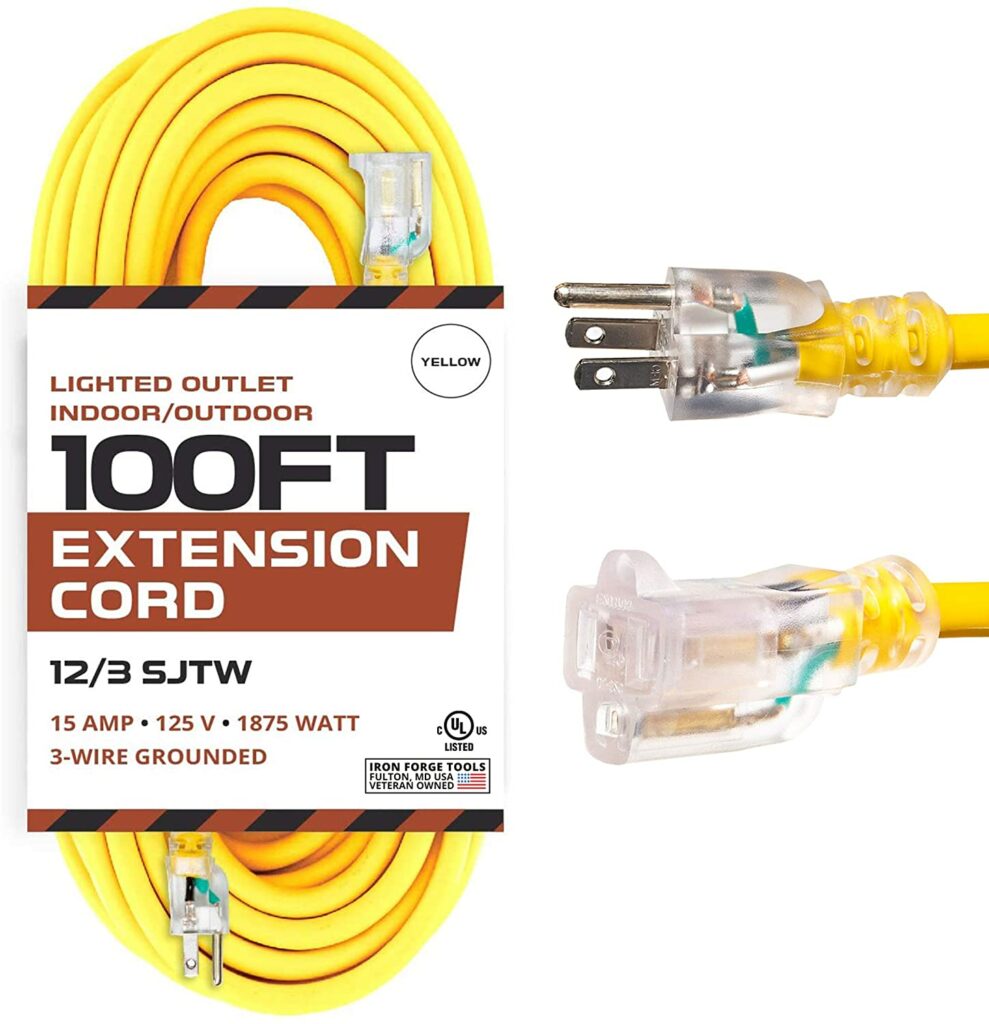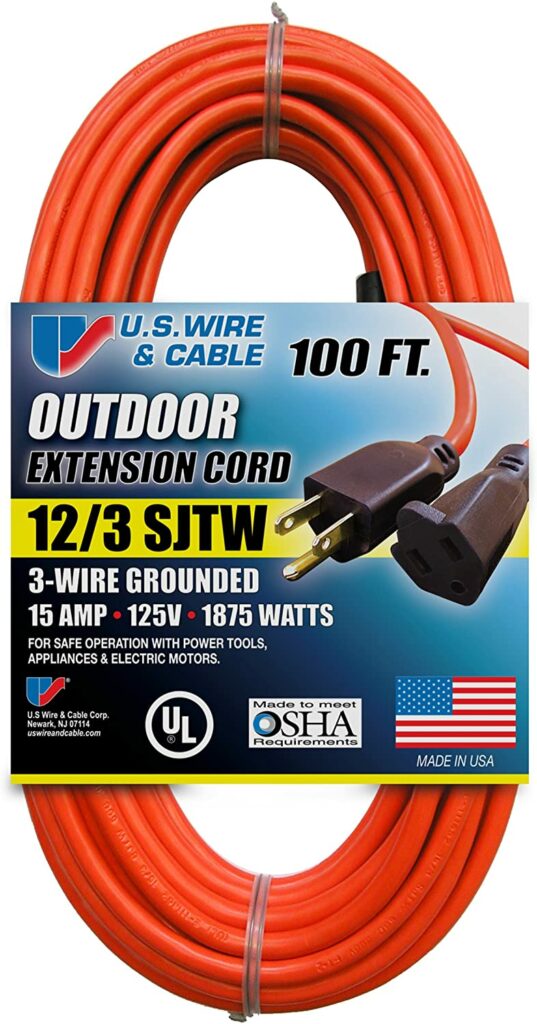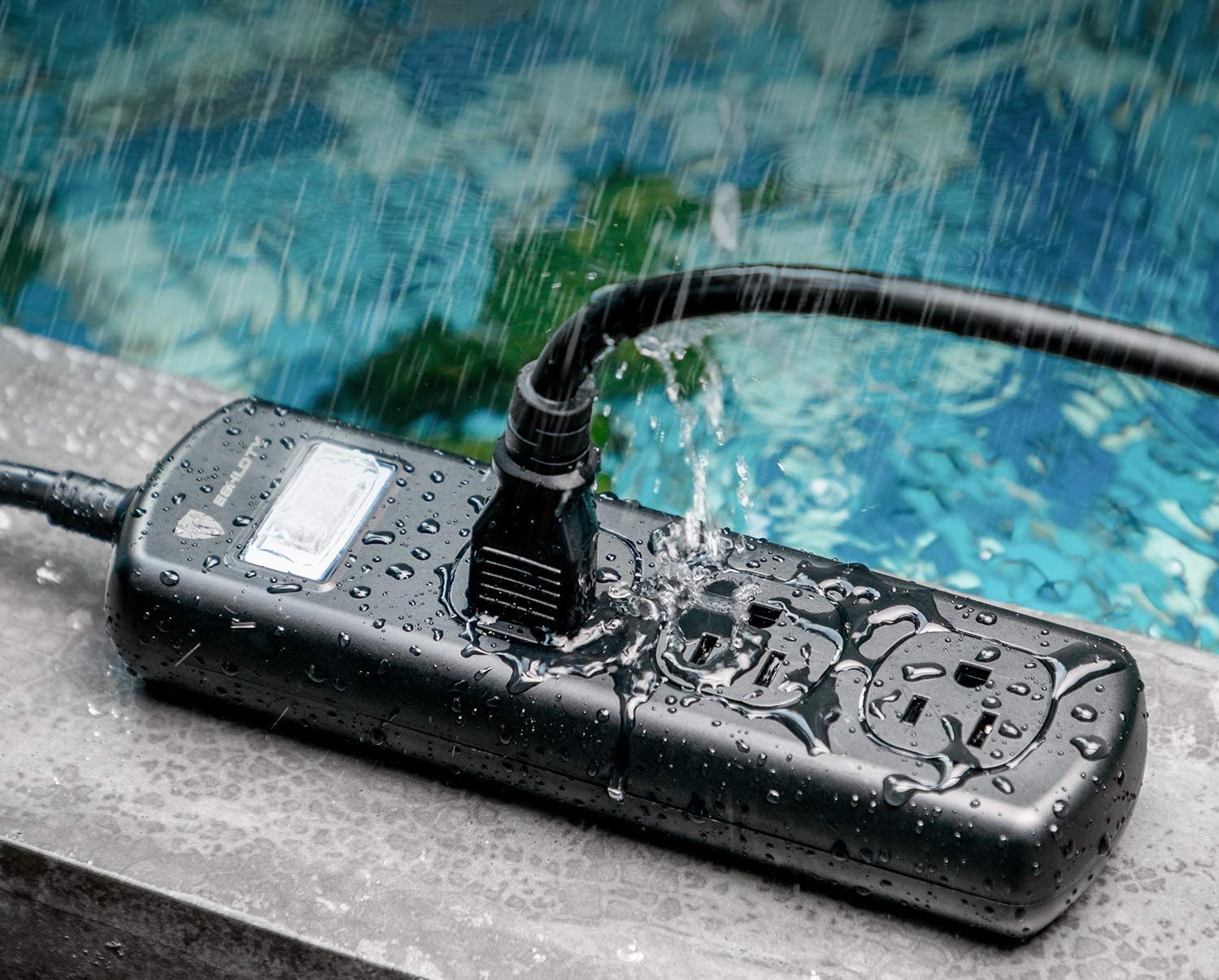Table of Contents
When working to maintain and design our home’s outdoor surroundings, we often forget the importance of having a durable, high-quality extension cord that reaches even the farthest, trickiest distances. You’ll want your extension cord to reliably and safely deliver power while holding up to poor weather conditions, weeds, insects, and pretty much all outdoor obstacles that come your way. Similar to the extension cord with timer the outdoor extension cord with switch is what you are looking for.
Safety First
Per Electrical Safety Foundation International (ESFI), approximately 3,300 home fires arise annually from extension cords, injuring or killing hundreds of people. If used improperly, too much electrical current may pass through extension cord wires, causing them to overheat and catch on fire.
Extension Cord “Do’s”
To prevent overheating and fires:
- Inspect cords for damage before using them. If you find loose connections, bare wires, or frayed sockets, replace your cord immediately.
- Purchase extension cords properly rated for your intended use and that meet–or better yet–exceed your devices’ power needs.
- Always keep extension cords away from standing water and clear of snow.
Extension Cord “Don’ts”
- Never overload your extension cords.
- Don’t plug extension cords into one another to increase length. Rather, purchase a longer extension cord that will do the job on its own.
- Never staple or nail extension cords.
- Don’t use a three-prong plug with a two-slot outlet.
- Never use an extension cord with a fan or heater, since this could cause overheating and a fire hazard.
Safe, durable, and reliable extension cords usually have a certified safety rating by independent testing agencies, such as Intertek (ETL) or Underwriters Laboratories (UL), confirming that they meet international and federal safety standards.
Best Outdoor Extension Cord with Switch
Last but certainly not least, consider purchasing an outdoor extension cord with switch. For example, some cords come with on/off switches or in-line rocker switches, which are hardwired devices without exposed local control that you press to disconnect or connect electrical circuits. If your preferred extension cord doesn’t come with a switch, you may be able to easily outfit your cord with an in-line rocker switch, which will make it just as useful as the best outdoor extension cord with switch on the market. In addition, if you’re interested in hanging outdoor lights, whether for Christmas or general ambiance, rather than purchasing an outdoor extension cord with switch that turns the lights on and off, you can select an outdoor dimmer to adjust the light’s levels ranging from 0% (i.e., “off”) to 100%, where in-between may be just right (aka “the Goldilocks principle”).
When determining the best outdoor extension cords, we considered all the features discussed above as well as price and value.
Best Value

We found that the US Wire and Cable 74050, 50ft, Yellow outdoors extension cord provides the “biggest bang for the buck.”
Pros:
- Extremely affordable
- SJTW vinyl jacket won’t crack in temperatures as low as -35 degrees Fahrenheit (F)
- Its bright yellow cord stands out from its surroundings and reduces tripping hazards.
- 50-foot heavy-duty extension cord features 12 AWG, 15 amps, and 125 volts, producing 1,875 watts of power.
- Lighted plug end, providing illumination when in use
Cons:
- A bit bulky to manage both when coiled and uncoiled
Best Overall

The 100-foot Iron Forge Cable is an all-purpose cord that is superb for indoor and outdoor use, including landscaping and gardening.
Pros:
- Its bright yellow, flexible vinyl jacket protects the cord from abrasion, moisture, and sunlight and temperatures ranging from -40 to 140 degrees F.
- 100-foot heavy-duty cord features 12 AWG, 15 amps, and 125 volts, producing 1,875 watts of power
- Lighted plug end with LED bulbs, indicating when the power is on
- Flexible and portable, both coiled and uncoiled
- Certified safety rating from UL
- Lifetime replacement warranty
Cons:
- Some limitations on extremely heavy-duty outdoor uses, but ideal for high-powered indoor jobs and most medium- to heavy-duty outdoor jobs
Best All-Purpose in Any Weather

We determined that the US Wire and Cable General Purpose Extension Cord, which delivers 15 amps, 125 volts, and 1,875 watts of power, is the best outdoor cord for any weather conditions.
Pros:
- Its double-insulated jacket of thermoplastic rubber is oil-, abrasion-, and deterioration-resistant to sunlight and moisture
- Withstands harsh environments from between -94 to 221 degrees F
- Has a surprisingly compact 100-foot cord, is 3-wire grounded and has a 12 AWG
- Designed for a variety of heavy-duty outdoor uses, including snowblowers, power tools, and generators
- Vivid, bright orange color enhances visibility and safety
Cons:
- No cons identified
How to Gauge the Best Outdoor Extension Cord?
An extension cord’s internal wire gauge refers to its thickness as measured by an American Wire Gauge (AWG) number. The smaller the gauge number, the thicker the wire. The AWG number is usually located on the outer thermoplastic jacket surrounding the cord and typically paired with the number of wires in the cord. For example, a 14/3 cord indicates a 14-gauge wire with three conducting wires.
Most recommend using 14 or 16 AWG as the minimum wire gauge for extension cords, where 10 AWG is probably the thickest gauge in most extension cords.
Light- to Heavy-Duty Extension Cords
The specific jobs you’ll be doing will help you determine whether you need the following:
- Light-duty extension cords use 16 AWG, have a 1 to 13 amp power rating (see below), and range in length from 25 to 100 feet. You can use these cords for work lights, hedge trimmers, and Christmas lights.
- Medium-duty cords use 14 AWG, have a 14 or 15 amp power rating, and range from 25 to 150 feet. Common uses for these cords include power drills or lawnmowers.
- Heavy-duty cords use 10 or 12 AWG, have a 15 to 20 amp power rating, and range from 25 to 150 feet. You can use these for chain saws, generators, and other high-power tools.
Power Rating
One of your most important decisions while picking the safest extension cord for the job is determining the appropriate power rating. Your cord’s power capacity is rated based on amps, watts, and volts. These values impact whether your cord is vulnerable to overheating due to an insufficient power rating for the tools you’ll be using. Fortunately, cord labels provide information regarding wattage restrictions.
- Amps (amperes): amount or volume of electricity flowing through the wire within the extension cord
- Volts (voltage): resistance or pressure of the electric flow
- Watts (wattage): result power (which = volts x amps)
The longer your extension cord, the greater your cord’s voltage loss or “voltage drop” will be, due to electrical resistance that develops over distances. You’ll therefore want to select the shortest extension cord you can for your specific task. For example, if you’re using a 16 AWG cord longer than 50 feet, you’ll only be able to provide power up to 1,250 watts. Yet if your 16 AWG cord is shorter than 50 feet, you can power a tool up to 1,625 watts.
What about the Jacket?
For your extension cord to function as safely as possible, the wire requires sufficient insulation, which is often called its “jacket.” Jackets for outdoor extension cords may be made of heavy-duty rubber, vinyl, or plastic, protecting the wire from overheating, exposure to the environment, and electricity leakage.
You’ll notice that a combination of letters may appear on jackets, indicating their material, strength, and purpose, such as:
- J = standard 300 voltage
- S = a flexible cord for general use
- T = made from vinyl thermoplastic.
- W = rated for outdoor use
Plugs and Sockets
Your extension cord’s plug may have two or three prongs. The third prong is an important safety feature for heavy-duty cords and larger devices since it grounds the cord by providing electrical currents with an additional path. You should never bypass or remove the ground pin.
Your cord’s socket is where you plug in tools. Your cord may provide several sockets to power multiple devices, but be careful not to go over the overall wattage indicated on the cord’s label.
Some cords also have ground fault circuit interrupters, which automatically shut off power in case of a short circuit or ground fault. In addition, some models provide lighted plug ends that illuminate when cords are powered for use in darker areas.

